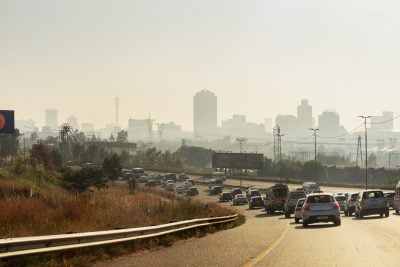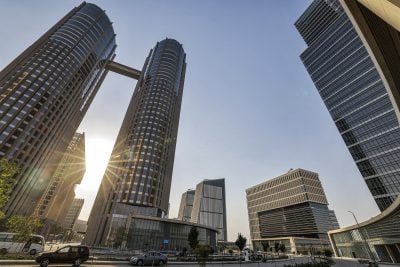Many regions of Africa felt the health impacts of the Covid pandemic less strongly than other parts of the world, but the economic and social effects have still been keenly felt – and none more so than in efforts to tackle climate change.
Construction of projects vital to the greening of the power system dropped behind schedule, while companies charged with supplying solar panels and clean cooking equipment struggled to keep going in the face of disrupted supply chains, movement restrictions and a fall in financial support from the international donor community. At the same time, Africans on low incomes seeking to buy clean energy products such as household solar panels deferred their purchases in the face of an uncertain future.
But there are signs of a revival in the clean energy sector as Covid restrictions ease and business and daily life return to something approximating normal. But it remains to be seen whether the mechanism likely to bring the greatest improvement in climate outcomes on the continent – the UN climate change process – can be cranked up to full speed.
Africa continues to feel the brunt of negative global warming impacts in terms of harsh weather conditions, despite accounting for only around 4% of global carbon emissions. Droughts are becoming longer and hotter and flooding more widespread and intense, shifting some fragile environments from being barely habitable to being uninhabitable. And there are wider impactsbsuch as the effects on the energy sector of rising demand for cooling products, putting strain on electricity supply.
Accounting for current pledges to combat climate change, children born in Africa in 2020 are likely to be exposed to 5-10 times more heatwaves compared to those born in 1960, according to the UN Intergovernmental Panel on Climate Change (IPCC).
The continent still relies to a large extent on funding from rich nations to finance the measures needed to reverse this process or deal with the consequences, through aid, technology and dealing with the impact of migration.
The UN process is central to dealing with all these consequences of climate change, so it was a blow when the COP26 conference in Glasgow was first delayed by a year due to the pandemic. Then, when it did take place, in November 2021, it failed to deliver as much as had been hoped for, in part because of the disjointed preparations when politicians were focused on the pandemic.
The conference was supposed to be a benchmark climate change meeting where a new raft of meaningful climate change measures would be implemented in a similar fashion to the Paris COP21 meeting in 2015, building on years of hard work to reach broader agreements in the interim. Instead, the outcome was closer to those of the intervening meetings, setting the stage for greater things to come.
James Reeler, WWF South Africa’s senior climate specialist, told African Business in December that COP26 had been “something of a mixed bag” for Africa, even if its outcomes had been more positive than recent conferences.
“It’s not sufficiently ambitious to deal with the current climate crisis, and largely leaves developing nations out in the cold when dealing with climate change, which does not gel with the founding principles of the UN Framework Convention on Climate Change – that those countries responsible and capable of dealing with the crisis must take more action and support others,” he said.
Instead, some of the big decisions were deferred – though perhaps only until this year’s COP27 meeting due to be held in Sharm El-Sheikh, Egypt in November. Reeler said a “saving grace” of COP26 was that the door was left open for increased ambition at the next meeting, rather than locking in the COP26 goals for another five years.
Methane pact could be crucial for Africa
The Glasgow meeting did produce some tangible benefits for Africa, including a potentially highly impactful scheme agreed by 100 countries to cut 30% of methane emissions by 2030.
Methane accounts for around a third of man-made global warming. It is also around 25 times more potent than carbon dioxide at trapping heat in the atmosphere and remains in the atmosphere for a much shorter period – around nine years rather than thousands of years for some CO2, according to the US National Oceanic and Atmospheric Administration (NOAA).
A rapid cut in methane levels is seen as one of the most effective ways to put a brake on global warming, and ameliorate its future impact on Africa. But rapid action is needed. NOAA said the annual increase in atmospheric methane during 2021 was the largest annual increase recorded since systematic measurements began in 1983.
This is an issue of direct relevance to the energy sector. The International Energy Agency estimates that nearly one-third of all methane emissions from human activity are generated from fossil fuel operations. Energy companies have said they are working to reduce methane emissions, but the overall trend in methane emissions remains on an upward trajectory, after a small fall during the Covid pandemic when oil and gas production declined temporarily.
CO2 levels are also continuing to rise. NOAA reported that the global surface average for carbon dioxide during 2021 was 414.7 parts per million (ppm), an increase of 2.66 ppm over 2020. That marks the 10th consecutive year that carbon dioxide increased by more than 2 parts per million – the fastest sustained rate of increase in 63 years since monitoring began.
South Africa benefits from coal reduction drive
African leaders acknowledge that agreement over reducing the use of coal as a feedstock in power stations – responsible for about 40% of annual global CO2 emissions – is also a positive for the climate-vulnerable counties on the continent. But there was disappointment that China and India had weakened the wording of the commitment to ‘phasing down’ coal use, rather than pledging to phase it out in the near term.
However, South Africa, the continent’s largest coal producer, did secure investments and loans of $8.5bn from international partners to transition from coal to green energy – said to be the largest single tranche of climate finance made to date.
South Africa has said the funding would help state energy company Eskom to reduce carbon emissions. However, the government has yet to commit to a date for phasing out coal – a Herculean task given that, despite a steady reduction in the share of coal in the overall energy mix, coal-fired power still accounts for 70% of South Africa’s electricity generating capacity. Urgent action is need as South Africa accounts for almost a third of African carbon emissions, mainly due to its coal habit.
At the same time as pushing coal usage down, South Africa also intends to invest in the growing green hydrogen economy, seeking to become a global hub by harnessing its copious solar and wind resources to produce hydrogen using electrolysis, a power intensive but clean method of production compared to commonly used methods using fossil fuels with carbon emissions as a by-product. South Africa has an added incentive to develop green hydrogen because it is a major source of platinum, which is used as a catalyst in the electrolysis process.
Overall financing comes up short
But overall, international support for climate change measures in Africa has fallen short of expectations. Developed countries still haven’t met a target set in 2009 to invest $100bn a year to help meet developing countries’ climate adaptation and mitigation needs – and many believe that even that amount is not enough.
Tariye Gbadegesin, managing director of ARM Harith Infrastructure Fund told African Business at the end of COP26 that $100bn a year “should be a floor and not a ceiling”, given the cost of the global climate transition was estimated to be between $100 trillion and $130 trillion.
“For Africa alone, just the cost of energy access is $100bn, so $100bn across developing economies – it’s not enough. Nigeria estimated the cost of its energy transition to net zero over 30 years to be $400bn, so it’s just not enough, and the developed economies really need to do better,” she said.

The AfDB estimates that between $1.3trn-$1.6 trn will be needed over 2020-30 to implement Africa’s climate action commitments and Nationally Determined Contributions (NDCs), which are individual country climate action targets. That’s an annual $118bn-145bn.
But if current trends continue, a climate financing gap of $99.9bn-127.2bn a year will remain by 2030, undermining Africa’s efforts to support climate resilience and a just energy transition.
Gbadegesin said there were concerns over the accessibility and relevance of that capital, even where it was forthcoming, “Many developing economies were just complaining through the hallways of COP about how virtually impossible it is to access even the little amount of capital that is committed,” she added.
Her remarks echo a sentiment often heard around the continent that climate finance has often been easier to mobilise for more resilient countries with more stable economies that for those most vulnerable to climate shocks.
Climate finance is also hard to keep track of and measure adequately. “The global climate finance landscape is highly fragmented, leaving accountability for climate finance flows opaque and hard to measure objectively,” the African Development Bank (AfDB) said in its African Economic Outlook 2022.
The Bank noted that climate-related projects had increasingly been funded by debt instruments on non-concessional terms rather than concessional loans or grants.
“The 33% of debt-financed climate projects in Africa on non-concessional terms could have increased Africa’s debt burden and exacerbated debt sustainability challenges, further undermining the continent’s climate resilience capacity,” the AfDB said.
There are philanthropic, blended finance and private initiatives bolstering funding for green energy, climate resilience measures and other climate finance measures on less onerous terms. Amazon founder Jeff Bezos’ Earth Fund pledged $2bn to the cause, and the Bezos Earth Fund also joined the Rockefeller Foundation, IKEA Foundation and other philanthropic institutions in supporting the Global Energy Alliance for People and Planet (GEAPP), which aims to mobilise $100bn in public and private capital to go towards adapting to climate change over the next decade. Investment partners in the project include the AfDB, the European Investment Bank and the World Bank.
COP27: implementation is the word
Hopes are now pinned on the outcome of COP27, a conference taking place on African soil, to make faster headway in turning aspirations for tackling the continent’s climate change needs into well-targeted action on the ground.
The host government is making all the right noises. UN Officials have said the meeting should be treated as a climate summit for Africa, while Egypt has said it intends to launch a plan for the energy transition in the continent during the climate summit, with an emphasis on mobilising climate finance.
Egyptian Foreign Minister Sameh Shoukry, the president-designate of COP27, told AP in May that the overall goal was implementation. “The commitments and the pledges now have to be implemented in all sectors of the climate change agenda, whether it’s in adaptation, mitigation or finance, loss and damage,” he said.
Egypt relies on natural gas — which it also produces – for most of its electricity production. But Shoukry said he did not regard fossil fuels as part of the solution to climate change.
“We might see in gas a transitional source of energy with certainly less emissions. But I think we have to really move quickly to the net zero goal and we have to apply ourselves more effectively in new technologies, in renewable energy,” he told AP.
Egypt has been one of the most proactive countries in Africa in terms of investment in renewable energy. In addition to pouring investment into large wind and solar farms, the government signed a number of agreements in early 2002 to develop green infrastructure projects. These included a memorandum of understanding with green energy firm Scatec for a $5bn development to produce green ammonia from green hydrogen by the Suez Canal.
Covid spending shows what’s possible
The huge scale of the response to the Covid pandemic shows that, given the right impetus, vast sums can be directed at a global problem.
“The scale of fiscal measures mobilised by the world in response to COVID-19 ($17 trillion) within two years indicates that the tools and resources to meet the climate finance commitments exist – if political will is mobilised,” the AfDB said in its Economic Outlook.
The Bank also offered up a series of policy recommendations which are likely to be central to debate in Sharm-El-Sheikh in November. Firstly, it said developed countries should honour their commitment to provide $100bn annually to developing countries to support climate action and that this should be new and additional resources, distinct from official development assistance (ODA) commitments and financing from multilateral development banks (MDBs).
“Innovative financing instruments, such as green bonds and loans, sustainability or sustainability-linked bonds and loans, debt-for-climate swaps, and more efficient and better-priced carbon markets, could provide much-needed domestic resources to support Africa’s ambition to achieve a net-zero transition by 2050,” according to the Bank.
It said institutional capacity development, along with regulatory and other policy reforms, are urgently needed to support and accelerate climate finance from domestic and external sources – public and private – for climate resilience and a just energy transition in Africa. It also said MDBs, development finance institutions, and bilateral development agencies should make available a greater volume of concessional finance instruments and grants to support climate adaptation and a just energy transition in Africa.
“Climate change is a global commons problem, demanding global cooperation for sustainable resolution. Accelerating climate finance for climate resilience and a just energy transition in Africa is in the interest of the whole of humanity’s future,” the AfDB said.
Want to continue reading? Subscribe today.
You've read all your free articles for this month! Subscribe now to enjoy full access to our content.
Digital Monthly
£8.00 / month
Receive full unlimited access to our articles, opinions, podcasts and more.
Digital Yearly
£70.00 / year
Our best value offer - save £26 and gain access to all of our digital content for an entire year!
 Sign in with Google
Sign in with Google 



